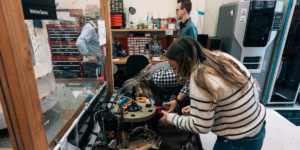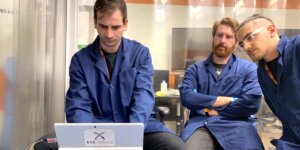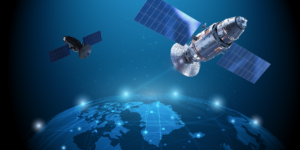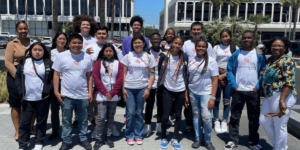
David Barnhart, director at SERC
The Space Engineering Research Center, a joint effort between the USC Viterbi Astronautics Department and ISI, has just launched a novel class on satellite-to-ground communication.
Created and taught by SERC director David Barnhart, the pilot course will teach actual land-based satellite tracking.
His aim: to improve students’ chances of landing internships or their first post-graduation jobs by demonstrating real tracking expertise. “I hope this will be one of many courses offered by Astronautics and SERC to bring hands-on training into USC’s lexicon and coursework for space systems,” says Barnhart, ISI director of space technology and systems. “This gives graduate and qualified undergraduate students the specific experiential learning on space systems that they rarely, if ever, get at any university.”
The course expands USC’s current program — designing, building and launching actual rockets and satellites — into actual satellite-to-ground tracking. Says Barnhart, “It’s a vital complement to classroom instruction for a highly capable, next-generation space workforce.”
While SERC has offered experiences to students via its unique “engineering teaching hospital” at ISI for years, the course is Astronautics’ first learn-by-doing offering. Three aerospace companies will offer guest lectures: The Boeing Company, Millennium Space Systems, Inc. and Los Angeles startup NovaWurks, Inc. Students are using a 4.5-meter dish antenna located on USC’s University Park campus to track low earth and geosynchronous satellites in a direct extension of class instruction.
Published on January 23rd, 2017
Last updated on June 3rd, 2021












